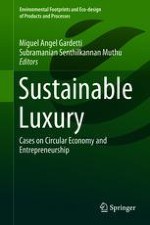2019 | Buch
Sustainable Luxury
Cases on Circular Economy and Entrepreneurship
herausgegeben von: Dr. Miguel Angel Gardetti, Dr. Subramanian Senthilkannan Muthu
Verlag: Springer Singapore
Buchreihe : Environmental Footprints and Eco-design of Products and Processes
